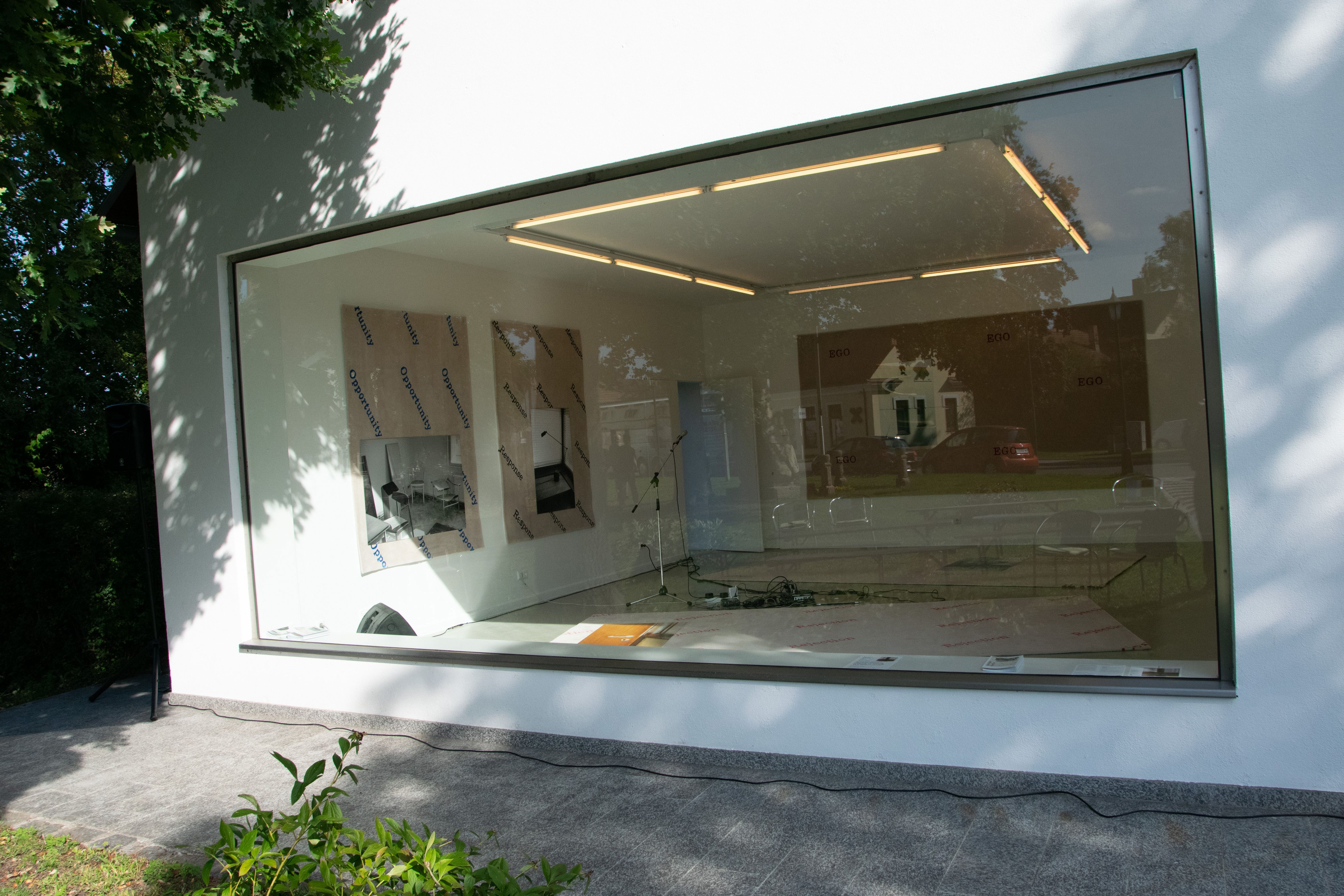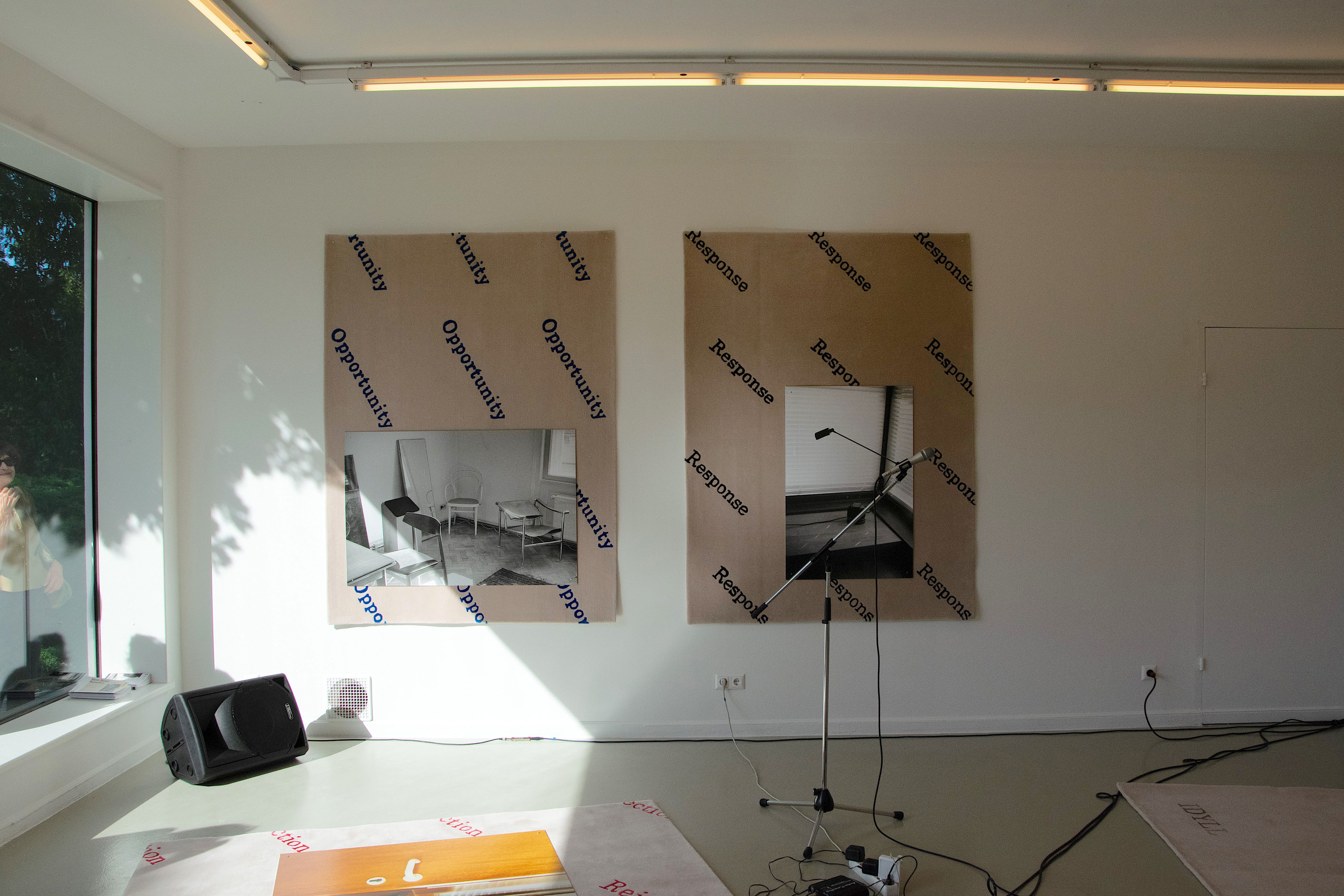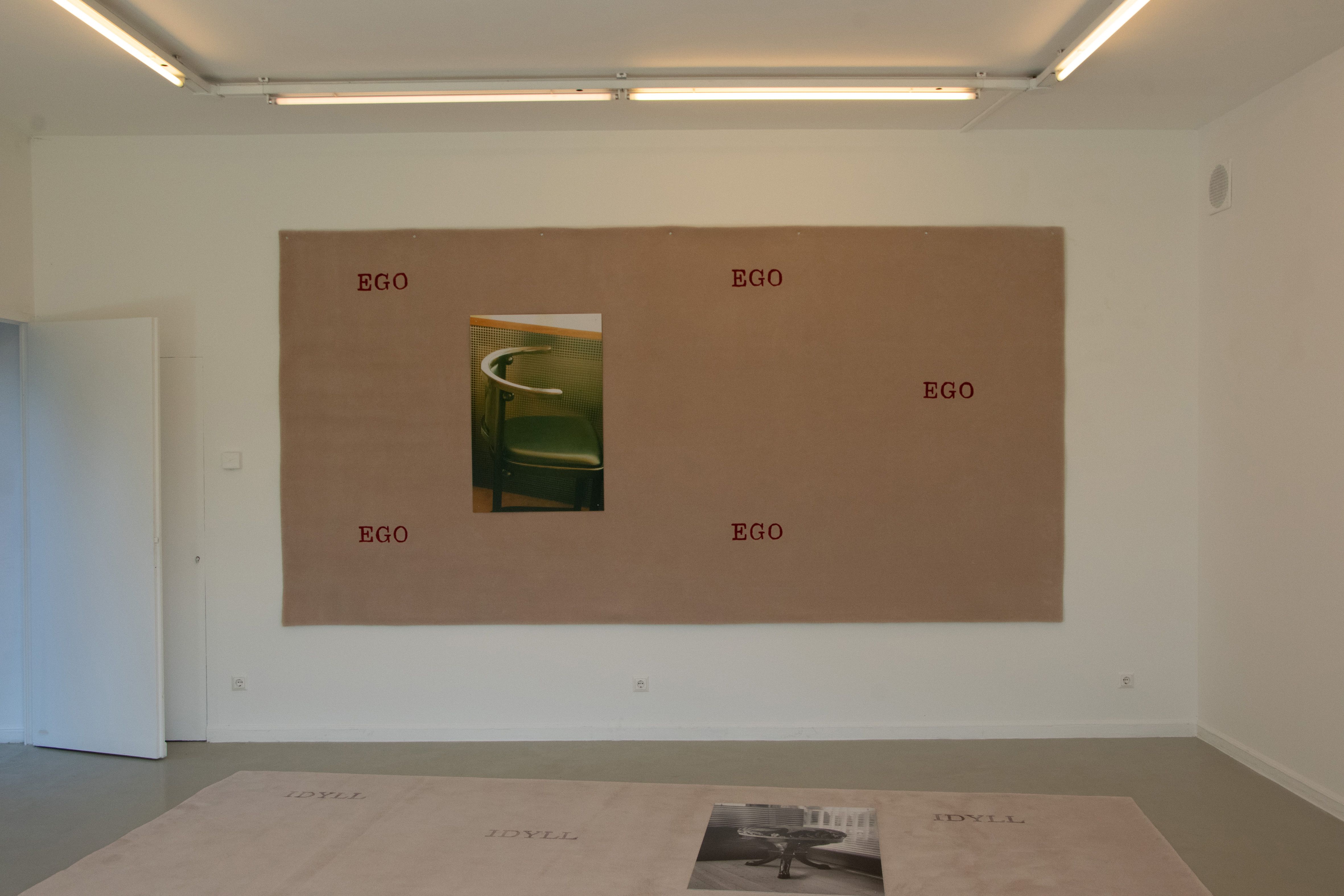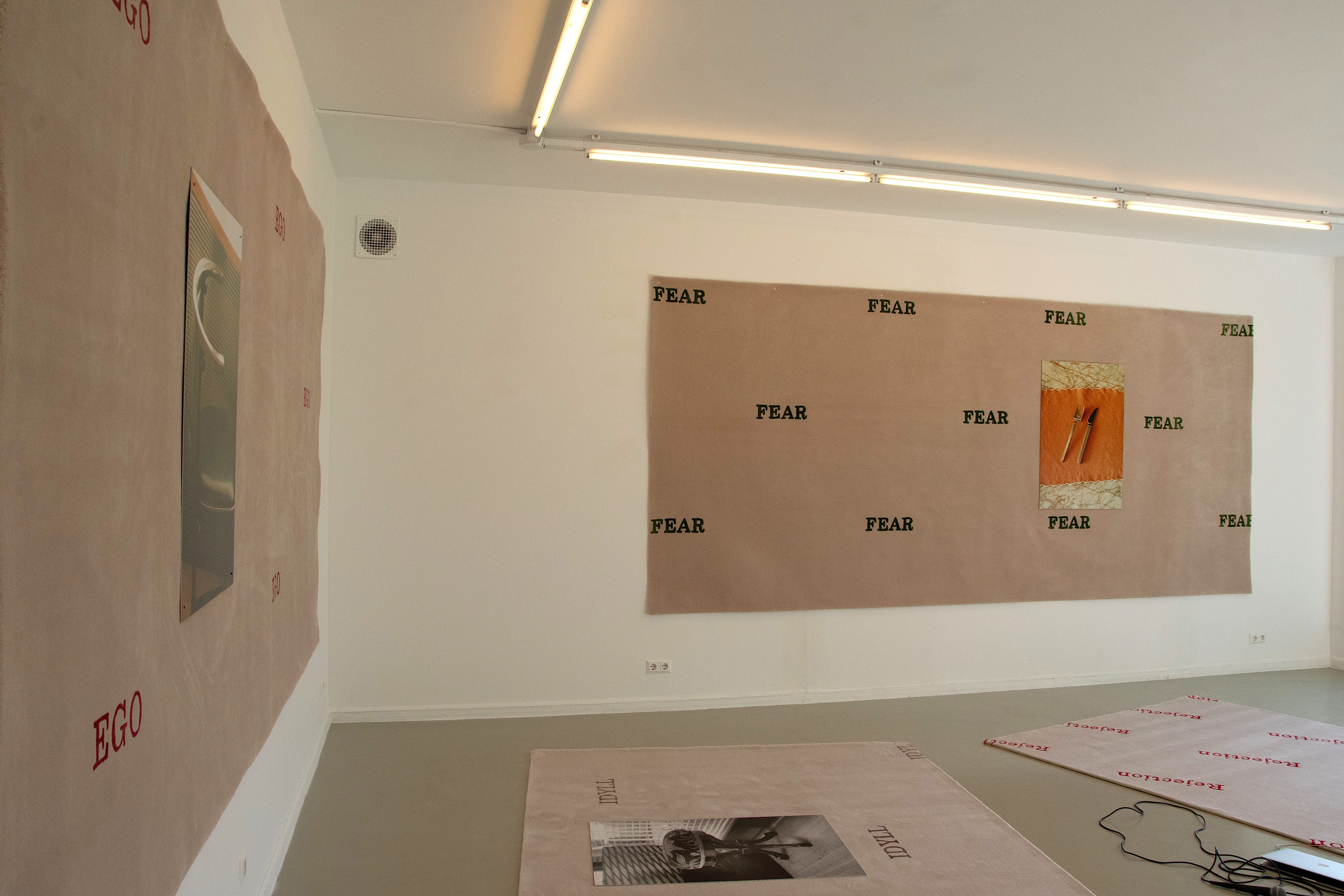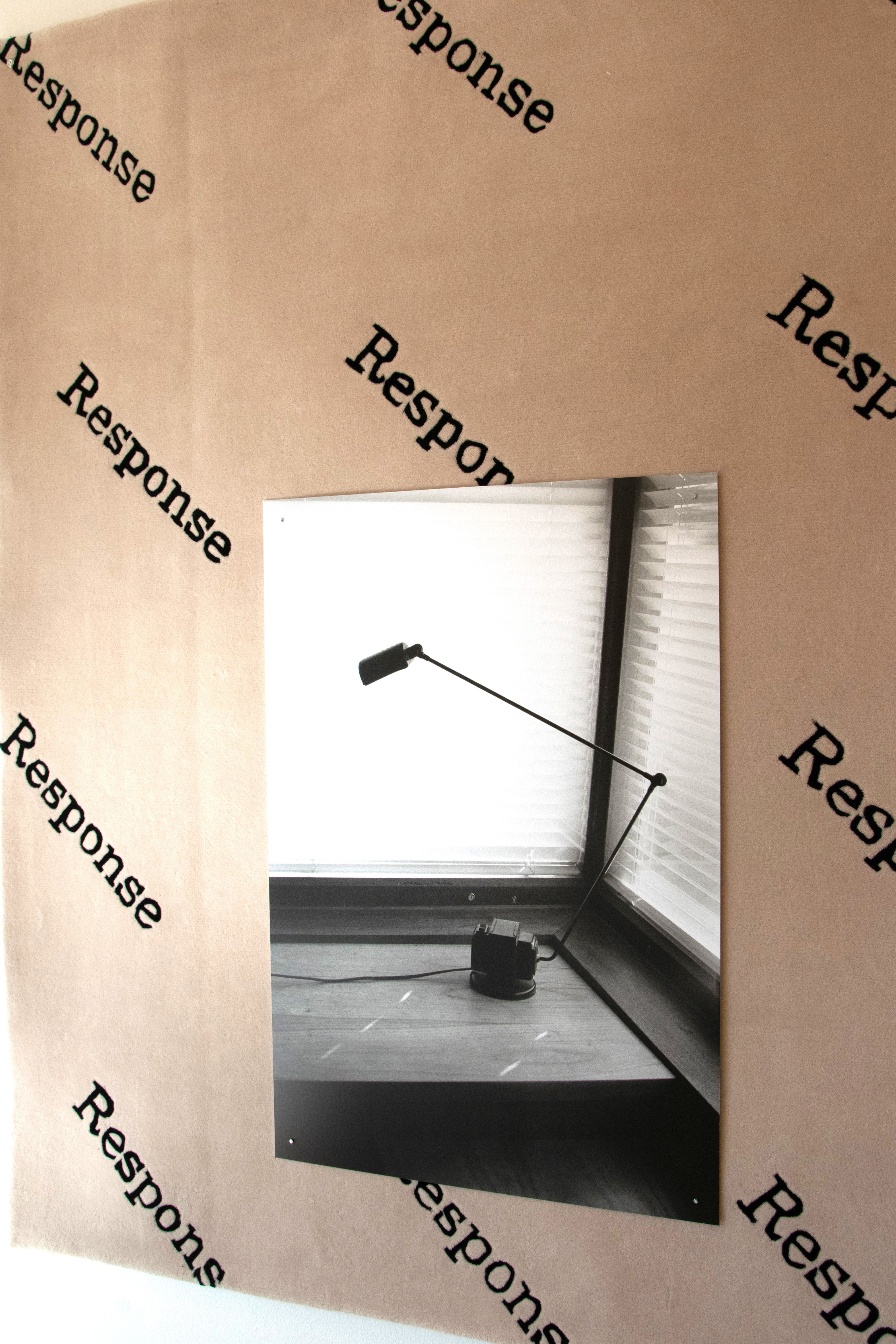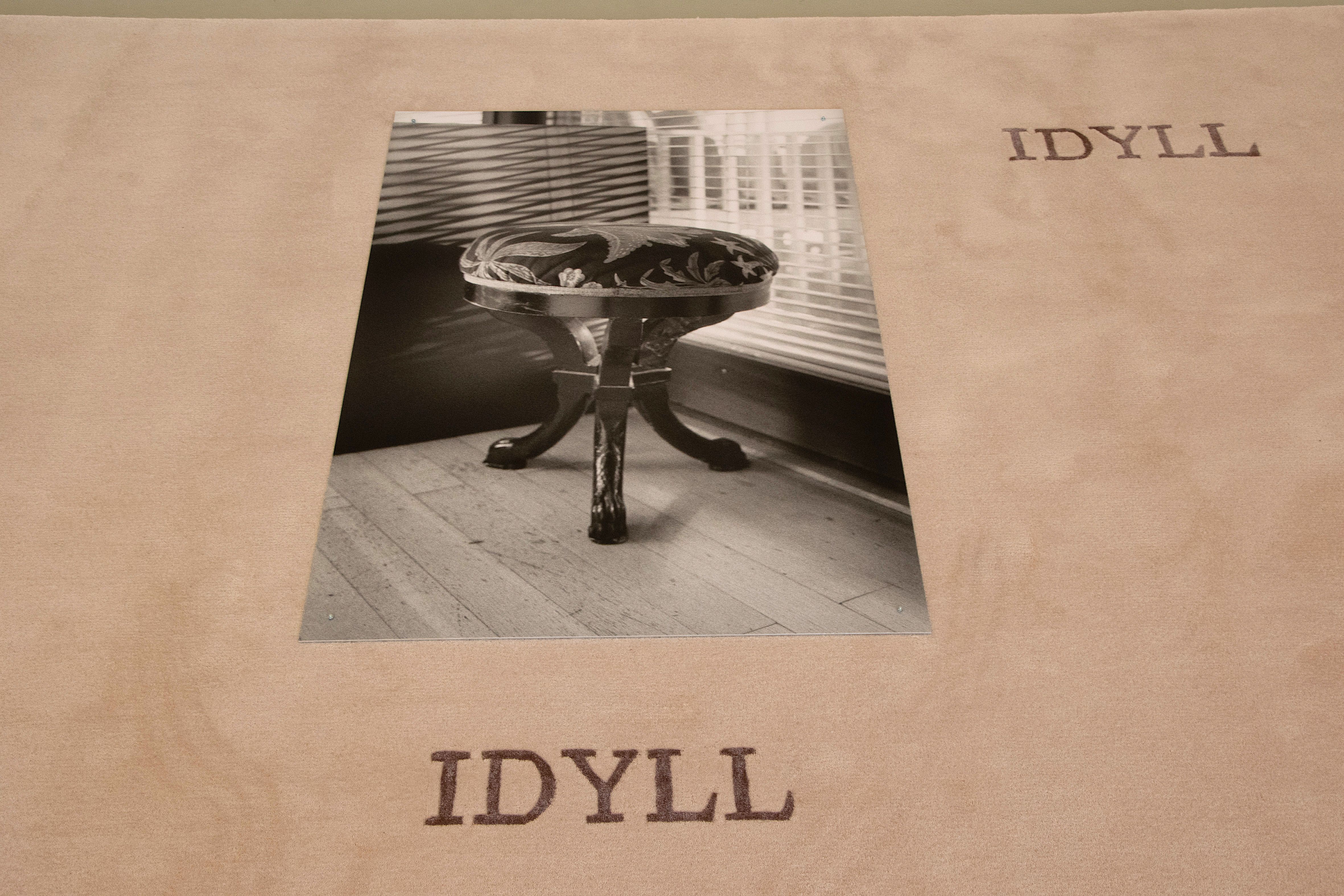Rosa Rendl
:
Rejection
Back
Information
Rejection can mean being rejected by someone, or rejecting someone or something. Are you in the active or passive role? Rejection is an (anticipated) reaction that occurs out of fear of being rebuffed; there is a moment of repetition, and the cycle begins. This is a choreography immanent in social interaction, emerging somewhere between closeness and distance, inside and outside, self and other.
This dualism could also be found in rugs, which negotiate two opposing worlds on a metaphorical level. Like carriers of meaning, they connect the private with the public realm through an inviting gesture. Rugs are often soft, they can be walked and sat on. Rugs seem to generate a feeling of coziness and are accomplices of social warmth. Their colors and patterns have meaning, and they reveal our cultural backgrounds and aesthetic preferences.
Rugs in different sizes made to fit the dimensions of the exhibition space filled the room, reflecting the situation and covering the floor and walls as carpets and tapestries.(1) Each work seemed like A Room of One´s Own, hinting at the importance of having a separate space in the private realm that makes us feel secure and lets us open up in the first place.(2) The photographs revealed everyday objects, apparently in interiors, making it seem as if viewers were looking through the abstracting zoom of a camera lens into someone else’s life. Their gaze penetrated deep into another interior, in a way creating a doubling effect of the window through which the inside of the Kunstraum is visible. The terms Fear, Ego, Opportunity, Idyll, and Response were inscribed as emotional links on the rugs, referring to the intimacy of inner experience and describing subjective emotional states. Through the typography of the words, a textual ornament, even a mesh of social states and conditions, was created.(3) The nexus between the written words and the images was the connection between a you and a me—a network of relationships that intertwined like threads of fabric moving toward an us.
Barbara Rüdiger
1 “But is a room that is entirely covered with rugs not an imitation? After all, the walls are not made of rugs! Certainly not. These rugs want only to be rugs, and not bricks. They do not want to be mistaken for bricks, or imitate their colors or patterns. Instead, they clearly display their function of covering the wall surface. They fulfill their purpose according the principle of covering.” Adolf Loos, “Das Prinzip der Bekleidung, 1898,” Warum ein Mann gut angezogen sein soll. Enthüllendes über offenbar Verhüllendes (Vienna: Metroverlag, 2007), xy. Translation here by Dr. Ingo Maerker & Michelle Miles.
2 Virginia Woolf, A Room of One´s Own (London: Hogarth Press, 1929).
3 “Text means tissue; but whereas hitherto we have always taken this tissue as a product, a ready-made veil, behind which lies, more or less hidden, meaning (truth), we are now emphasizing, in the tissue, the generative idea that the text is made, is worked out in a perpetual interweaving; lost in this tissue—this texture—the subject unmakes himself, like a spider dissolving in the constructive secretions of its web.” Roland Barthes, The Pleasure of the Text, trans. Richard Miller (New York: Hill and Wang, 1975), 64.

